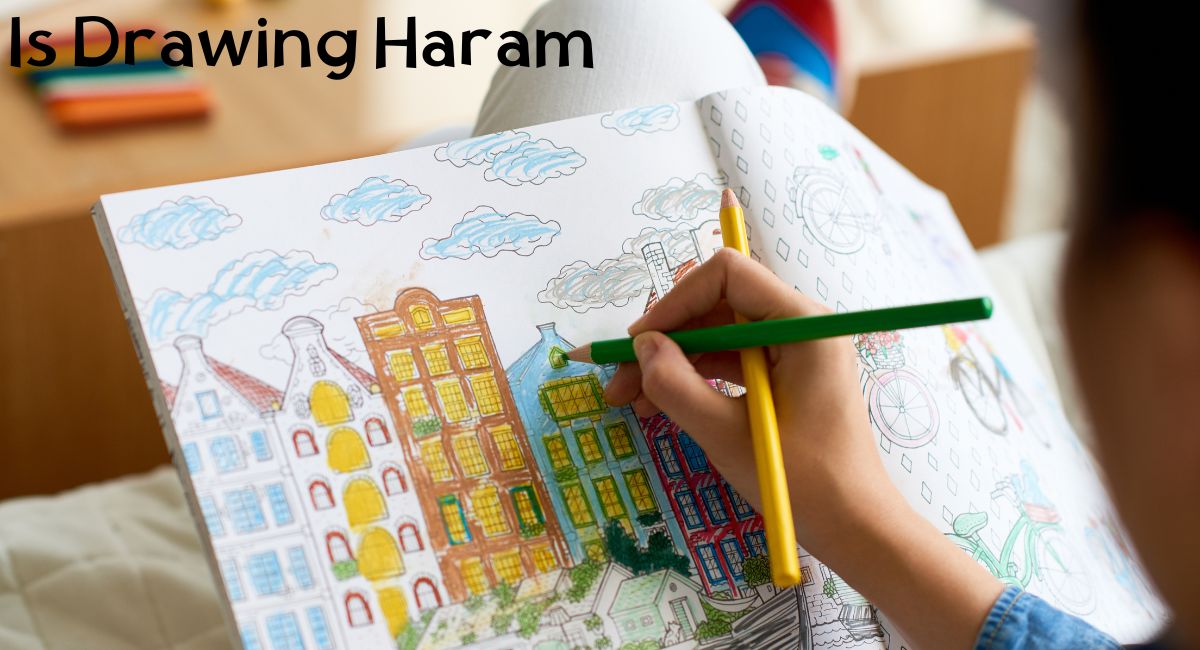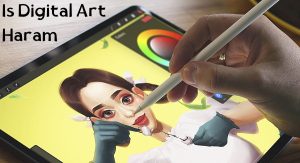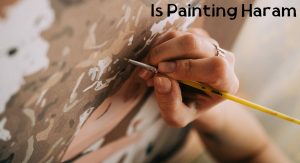The question of whether drawing is considered Haram (forbidden) in Islam is one that has sparked debates and discussions among scholars and individuals alike. In the world of art and creativity, drawing serves as a means of expression and communication for many people, allowing them to convey their thoughts, emotions, and ideas.
However, in the context of Islamic jurisprudence, the permissibility of drawing and its adherence to Islamic principles can vary depending on the interpretation of religious texts and traditions.
In this article, we will delve into the nuanced perspectives surrounding drawing in Islam, exploring the diverse viewpoints and arguments to shed light on this complex and intriguing topic.
Is Drawing Haram
The question of whether drawing is haram (forbidden) in Islam involves complex religious and cultural interpretations. Based on Islamic teachings, particularly the Hadiths (sayings and actions of Prophet Muhammad), the primary concern arises from the creation of images that could lead to idolatry, which is strictly prohibited in Islam.
General Prohibition of Drawing Living Creatures
According to a majority of Muslim scholars, drawing living creatures, which includes humans and animals, is considered haram. This view stems from various Hadiths.
For instance, a Hadith in Sahih Al-Bukhari states, “Allah’s Messenger said: ‘Those who make pictures will be punished on the Day of Resurrection, and it will be said to them: Make alive what you have created’”.
Another Hadith reported by Ayisha, the wife of the Prophet, recounts an instance where the Prophet became angry upon seeing a curtain with pictures, emphasizing the severe punishment for those who try to imitate Allah’s creation.
Specific Prohibitions and Exceptions
The prohibition extends specifically to images depicting gods, prophets, adultery, and any other haram (forbidden) elements. For example, drawings that show idols, living creatures resembling prophets or Allah, or encourage shirk (associating partners with Allah), are considered haram.
However, exceptions exist. Drawings that do not contain haram elements and are not used for haram purposes are allowed. Furthermore, if a drawing helps spread Islam and teaches others about the faith, it is permissible.
Variations Among Islamic Schools of Thought
The interpretation of these rules can vary depending on the Islamic school of thought (Maadhib) one follows. For instance, Al Maadhib el Malaki does not prohibit drawing unless it includes haram elements.
Views on Drawing Faces and Incomplete Images
There’s debate among scholars regarding the permissibility of drawing faces or anything with a soul. Some prohibit it, while others consider it permissible under certain conditions.
Shaikh Muhammad Saalih al-Munajjid, for example, noted that images without complete facial features (like those without eyes or nose) are not considered haram as they do not fully imitate the creation of Allah.
Contextual Interpretations and Modern Perspectives
The interpretation of these teachings can vary in modern contexts. While traditional forms of image-making like painting and sculpting are often debated, contemporary forms like photography have different scholarly opinions. It’s considered safer for Muslims to avoid images of living creatures unless necessary for practical purposes like identity cards.
Is Drawing Faces Haram
In Islamic teachings, especially based on the Hadith (sayings and actions of Prophet Muhammad), there is a general prohibition against drawing living creatures, including human faces.
The interpretation of these teachings can vary. Some Islamic schools of thought, like Al Maadhib el Malaki, do not prohibit drawing unless it includes elements considered haram (forbidden). However, the overall stance in many Islamic teachings is that drawing faces and living creatures is not permissible.
Despite the general prohibition, some scholars offer a more nuanced view, suggesting that the context and intent behind creating drawings could influence their permissibility. If the drawings are for educational, historical, or non-idolatrous purposes, they might be considered acceptable within certain restrictions. It is crucial, however, to avoid any form of idolatry or veneration of these images.
There is also a view that drawing incomplete faces (without certain features like eyes or nose) might not be considered haram, as these images do not fully imitate the creation of Allah. This interpretation is held by scholars like Shaikh Muhammad Saalih al-Munajjid.
Given the varying opinions and the gravity of the issue in Islamic jurisprudence, Muslims are generally advised to approach the matter of drawing faces with caution. The overarching principle is to uphold Islamic values and avoid actions that could lead to idolatry or violate core Islamic beliefs. In situations of uncertainty, consultation with knowledgeable Islamic scholars for specific guidance is recommended.
Is Drawing Anime Haram
According to Islamic teachings, as derived from the Qur’an and Hadith, making idols and drawing pictures, especially those representing living beings, is generally considered haram. This is because such acts are seen as akin to imitating the creation of Allah and can lead to idolatry.
Anime, as a modern form of picture or image-making, often falls under this general prohibition. It’s especially considered haram when the anime characters are purely imaginary and do not represent real objects or beings.
Some Islamic scholars differentiate between anime and traditional idols, noting that while idols are made for worship, anime is generally created as a virtual representation of human beings, not for the purpose of worship. Therefore, they argue that anime could be considered halal (permissible) under certain conditions.
For example, if the anime does not contain nudity, promote crime or corruption, or violate the principles and rules of Islam, it may not be considered haram. The intent and content of the anime play a significant role in determining its permissibility.
There is a perspective that if the goal of drawing anime is to help spread Islam and educate people about the religion, then it is fully permissible. However, mainstream anime shows that include violence or inappropriate scenes, which do not serve to promote Islam, are likely to be considered haram. This viewpoint reflects a more utilitarian approach, where the content and purpose of the anime are critical factors in determining its acceptability in Islamic terms.
For a comprehensive exploration of the permissibility of various forms of artistic expression in Islam, read these articles.
Is Painting Haram: Delve into the world of Islamic jurisprudence and discover whether the act of painting falls under the category of halal or haram. This article sheds light on the religious views surrounding painting as an art form.
Is Digital Art Haram: In the age of technology, digital art has gained prominence. But is it considered halal or haram in Islam? Uncover the religious perspective on digital artistry and its permissibility in this thought-provoking article.
Frequently Asked Questions
1. Is drawing fictional characters haram?
The permissibility of drawing or designing any animate object, including fictional characters or cartoons, is debated among scholars. Some, like Sheikh Ahmad Kutty, suggest that drawing for educational or communicational purposes is not sinful or haram. However, others assert that Islam prohibits drawing figures that depict god, prophets, adultery, or other forbidden things.
2. Is drawing for fun haram?
Opinions among scholars vary regarding drawing for fun. While some consider it haram, particularly when depicting animate objects or promoting anything haram, others believe it’s not prohibited as long as it doesn’t harm oneself or others. The acceptability of drawings may depend on their content, with the portrayal of nudity or indecency being particularly discouraged.
3. Is drawing forbidden in islam?
The act of drawing in Islam is not explicitly mentioned in the Quran, leading to different interpretations among scholars. Some argue that drawing animate beings is strictly prohibited, citing hadiths and Islamic jurisprudence. Others suggest that drawing is permissible as long as the imagery doesn’t depict anything against Islamic guidelines or idolatry.
4. Is drawing eyes haram?
Drawing specific parts of the human or animal body, like eyes, is generally considered permissible by most scholars. However, drawing entire bodies may be viewed differently. Some scholars allow drawing animate objects without detailed facial features, while others suggest that any representation of life, even with missing features, is not permissible.
5. Is drawing yourself haram?
Drawing oneself or parts of the human body is viewed differently among scholars. While some Sunni scholars consider drawing whole bodies as prohibited or makrooh (disliked), drawing parts of the body, such as a smiley face with basic features, is often seen as permissible. The overall acceptability depends on whether the drawing depicts anything against Islamic guidelines or promotes haram activities.








